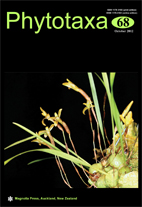Abstract
A preliminary regional IUCN Red List for liverworts and hornworts is provided for Réunion (Mascarene archipelago), in accordance with the IUCN Red List criteria 3.1. A total of 327 species were assessed of which one species (Bryopteris gaudichaudii Gottsche) is considered to be regionally extinct (RE), fourteen species categorised as critically endangered (CR), eight species are endangered (EN), nine species are vulnerable (VU), eight species are considered Near Threatened (NT), and 177 species are at Least Concern (LC). Thirty-one species of liverworts reported on the island are threatened (CR, EN, VU), no hornwort are considered threatened.
We divided the category “Data Deficient” into two categories: DDt (data deficient for taxonomy) and DDd (data deficient for distribution) to facilitate future assessment when data would be available.
The current species threat analysis, which has generated the first regional Red List of bryophytes for Africa is hoped to promote future studies on the conservation of African bryophytes.

